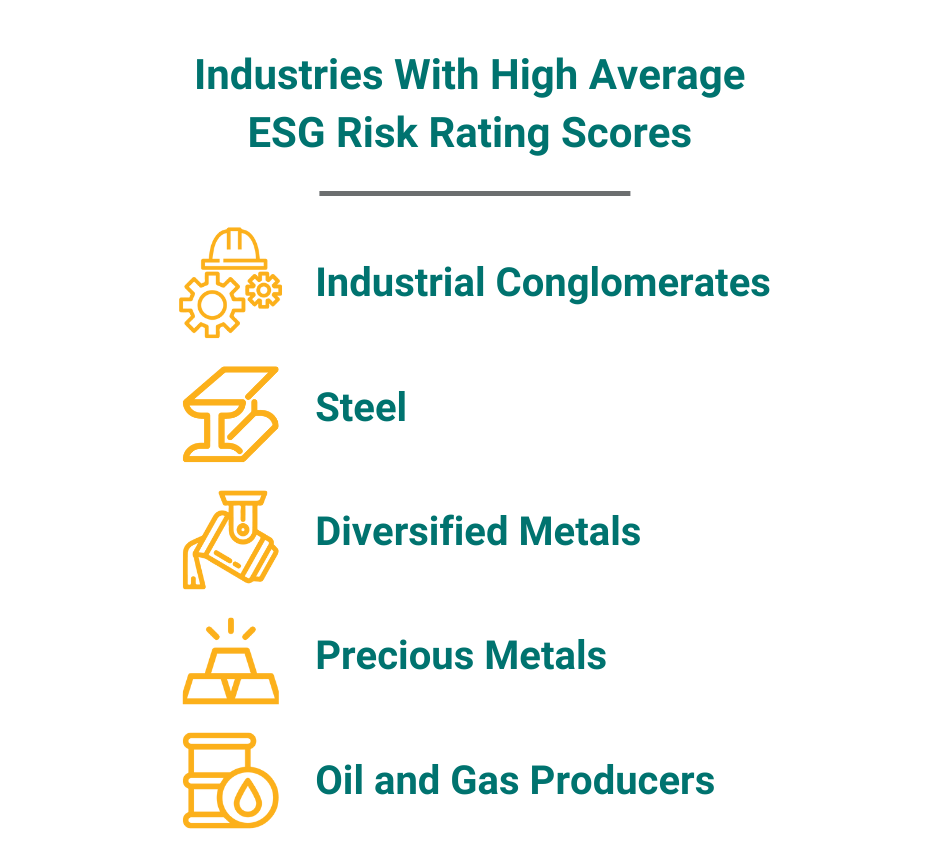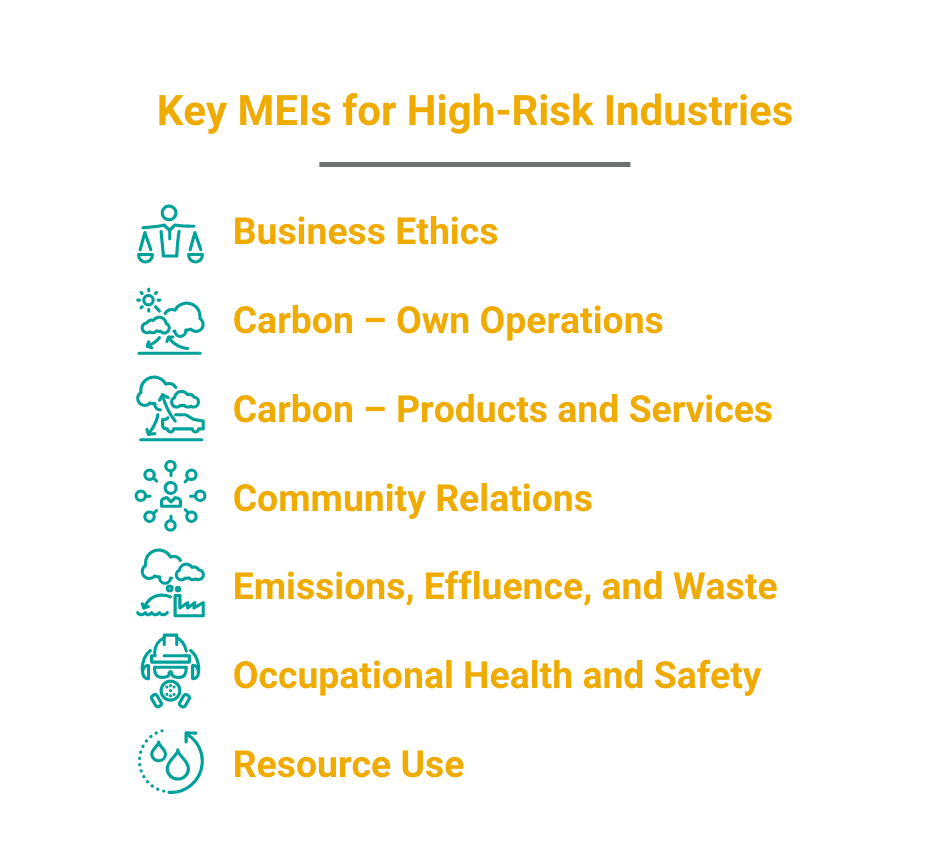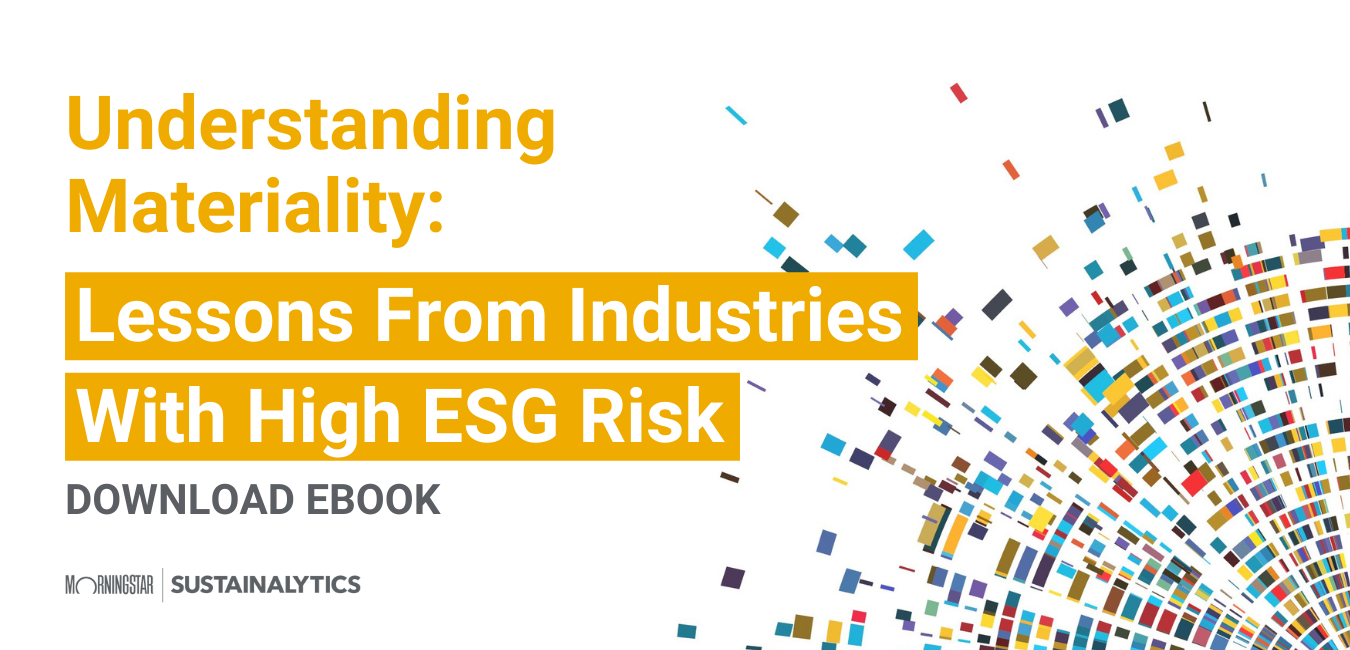All companies, no matter the size or industry, are exposed to non-financial factors that can impact their business. In particular, the effects of environmental, social, and governance (ESG) issues on a company’s business are of growing concern for investors, consumers, governments, and other stakeholders. Most companies are exposed to a multitude of ESG issues, so it’s important to determine which are most material and understand how they impact your business.
In this blog, we’ll examine the concept of materiality and take a closer look at a set of ESG issues found to be financially material for sectors with high ESG risk. We’ll also explore ways companies can manage these issues effectively. Not knowing which issues are material can result in ineffective management of those issues and ultimately negatively impact a company’s operations, employee retention, and financial performance.
What is ESG Materiality?
In the accounting and auditing world, information is material if omitting it from or misstating it in an entity’s financial statements could influence decisions made by the user. For investors and companies interested in sustainability and ESG performance, materiality takes on a similar meaning with respect to ESG issues impacting a company.
In our ESG Risk Ratings methodology, an issue is considered material if:
b) if its presence or absence in the company’s financial reporting is likely to influence the decisions made by a reasonable investor.
For an issue to be considered relevant to the company’s ESG Risk Rating, the issue must have a potentially significant effect on the economic value of a company and its financial risk-and-return profile from an investment perspective.1
Determining Which ESG Issues Are Material to Your Company
What is considered material will differ depending on the sector a company operates in and its business model. That’s why conducting an ESG materiality assessment is an important first step when trying to understand where to focus company attention and resources. In order for your company to manage ESG issues, you must first identify which issues are material to you and your stakeholders, and then understand the best practices for managing these risks while continuing to run your organization.
High-Impact ESG Issues Are a Common Thread Across Industries
In a recent analysis of industries with the highest average ESG Risk Rating scores, a handful of issues were found to be material for companies across the five highest-risk sectors. These issues can influence the overall ESG risk profiles for companies across most industries, if not all. Companies in the five highest-risk industries have especially high exposure to these ESG issues and the related risks.
 |  |
Business Ethics: Companies involved in legal or ethical misconduct face potential negative financial impacts and may suffer severe reputational risks that might change their operational outlook and market presence. To help avoid these negative outcomes, organizations need to develop an ethical culture supported by programs, procedures, and governance.
Carbon – Own Operations and Products and Services: Companies need to manage their carbon risk and align to low-carbon business models or they will face an increased regulatory burden and associated operational costs. Greenhouse gas (GHG) emissions reduction targets, including net-zero and science-based targets, are being used by companies in heavy-emitting sectors to help reduce their carbon impact and associated risks.
Community Relations: Establishing open and transparent community relations is critical for companies to maintain their social license to operate. Companies increasingly face pressure to reduce their environmental impacts in the communities where they operate and to provide support for sustainable local development. Poor community relations could fuel community opposition and lead to production interruptions and lost revenues.
Emissions, Effluents, and Waste: This remains a key concern across sectors and stakeholder groups, especially with the trend toward stronger, broader regulations and greater enforcement. Companies need to make concerted efforts to ensure they are managing emissions, effluents, and waste to avoid being penalized for environmental pollution.
Occupational Health and Safety: Ensuring and maintaining a safe and healthy work environment is critical for any company, whether their employees are stocking shelves, helping patients, or operating heavy machinery. Businesses need to ensure they manage the elements of workplace health and safety that they can control to minimize operational disruption and other negative impacts.
Product Governance: It’s important that companies ensure the quality and safety of their products and services and manage their responsibilities to clients. Failure to do so can subject them to reputational, legal, and regulatory risks.
Resource Use: The use of water as a resource is a focus for many industries. The overextraction of limited freshwater resources can cause people within regions to be displaced, and lead to potential conflicts within and among regions and nations. Thus, for water-intensive industries, responsible water use is important for maintaining operations as well as maintaining good stakeholder relations.
Key Actions to Effectively Manage Material ESG Issues
How companies address specific material ESG issues (MEIs) will depend on their operating environment, their resources, and the MEI in question. There are, however, some common actions all companies can take to identify and effectively manage MEIs in their business:
- Invest in learning and understanding industry best practice and practices from leading peers related to ESG issues.
- Understand your company’s starting point with respect to its MEIs and establish a benchmark for your key performance indicators. Then, where applicable, set ambitious and relevant targets for improvements (e.g., science-based target initiative).
- Establish board-level oversight of the most impactful MEIs for your business and your stakeholders.
- Establish relevant ESG policies and programs and seek external certification (e.g., ISO Certification).
- Leverage sustainable finance instruments (such as green, social, or sustainability bonds) to fund the development of assets and projects with positive environmental and social benefit.
- Consistently disclose on the related ESG strategies and progress against targets in annual CSR, ESG, or integrated reports.
Set up ESG education and training programs for management and staff.
Regardless of its business model or operating industry, every company faces ESG issues that are material to its financial performance, its impact on society, and its most important stakeholders. The effective management of these issues and their associated risks will contribute to superior long-term enterprise value.
Learn more about how companies can manage the material ESG issues impacting them by downloading our ebook, Understanding Materiality: Lessons From Industries With High ESG Risk or register for our webinar on Wednesday, May 11, 2022 at 10 am EDT (New York) / 3 pm BST (London) / 4 pm CEST (Amsterdam).
1 The concept of double materiality is gaining traction among investors and corporate reporters. Double materiality means reporting on both a) sustainability factors affecting a company (financial materiality), and b) and how a company impacts society and the environment (outward materiality). The concept is central to the European Commission’s Corporate Sustainability Reporting Directive (CSRD) which is applicable to about 50,000 large and listed companies in the European Union.
Recent Content
Risk and Opportunity in Biodiversity: How Sustainable Finance Can Help
This article outlines how biodiversity loss poses material risks to business and how it connects to many other issues that companies can’t ignore. In addition, it covers how biodiversity conservation presents substantial economic opportunities, and how businesses can address and access these opportunities by issuing linked instruments that integrate biodiversity considerations.
Today’s Sustainable Bond Market: Boosting Confidence in Sustainable Bond Issuances
In this article, we examine the kinds of sustainable bonds offered in the market, some of the key regulations being developed in different markets and the current initiatives to improve the quality and credibility of issuances.
Webinar Recap: How Integrating ESG Can Drive Opportunity for Private Companies
Recently, Morningstar Sustainalytics hosted a webinar – ESG in the Lifecycle of a Private Company: How Stakeholder Demands Drive Sustainability in Private Markets – to address some of the questions private companies might have surrounding ESG and how it could impact their business.





